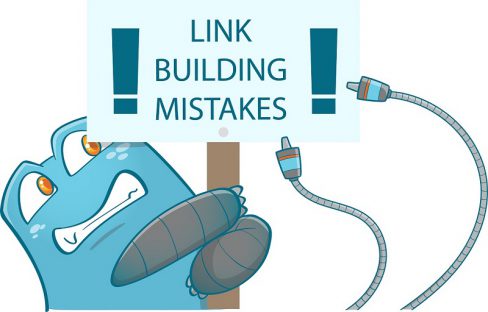Link building is a critical aspect of search engine optimization (SEO) that helps enhance your site’s authority and improve its rankings in search engine results pages (SERPs). However, the link-building process can be fraught with challenges, and making mistakes can harm your SEO performance rather than improve it. To maintain a clean and effective SEO profile, it is essential to be aware of common link-building pitfalls and how to avoid them. This article provides practical advice on identifying and avoiding these mistakes to ensure your link-building efforts contribute positively to your SEO strategy.
The Risks of Poor Link Building
Before diving into common mistakes, it’s crucial to understand the potential risks associated with poor link-building practices. Low-quality or unethical link-building tactics can lead to:
- Search Engine Penalties: Search engines like Google can penalize sites for engaging in manipulative or spammy link-building practices. These penalties can result in a significant drop in rankings or even removal from search results.
- Decreased Credibility: Poor-quality backlinks can damage your site’s credibility and reputation, making it less trustworthy to users and other sites.
- Wasted Resources: Investing time and resources into ineffective or harmful link-building strategies can be costly and counterproductive.
Common Link Building Mistakes to Avoid
1. Focusing on Quantity Over Quality
Overview: One of the most common mistakes in link building is prioritizing the number of backlinks over their quality. While having a high volume of links may seem beneficial, the quality of those links is far more important.
Mistake: Acquiring backlinks from low-quality or irrelevant sites can harm your SEO efforts. These links may come from spammy directories, link farms, or unrelated sites that offer little value.
Solution:
- Prioritize High-Quality Links: Focus on obtaining backlinks from authoritative, relevant, and high-quality websites. These links are more valuable and can positively impact your rankings.
- Evaluate Link Sources: Use tools like Ahrefs, SEMrush, or Moz to assess the quality of potential link sources. Look for sites with strong domain authority, relevant content, and a good reputation.
Example: Instead of targeting numerous low-quality directories, aim to secure backlinks from reputable industry blogs or influential websites.
2. Engaging in Black Hat SEO Techniques
Overview: Black hat SEO techniques are unethical practices that manipulate search engine algorithms to gain higher rankings. These tactics can result in severe penalties and long-term damage to your site’s SEO.
Mistake: Common black hat link-building tactics include buying links, participating in link schemes, and using automated tools to generate backlinks.
Solution:
- Avoid Manipulative Practices: Steer clear of any link-building methods that violate search engine guidelines. Focus on ethical, white hat strategies that prioritize genuine, valuable links.
- Follow Search Engine Guidelines: Familiarize yourself with search engine guidelines and best practices for link building to ensure compliance.
Example: Rather than purchasing links or participating in link exchange schemes, invest time in creating valuable content and building relationships with industry influencers.
3. Ignoring Link Relevance
Overview: Backlinks should come from sites that are relevant to your industry or niche. Irrelevant links can dilute the value of your backlink profile and harm your SEO efforts.
Mistake: Obtaining backlinks from sites that are unrelated to your content or industry can reduce the effectiveness of your link-building strategy and confuse search engines about your site’s relevance.
Solution:
- Target Relevant Sites: Focus on acquiring backlinks from websites and blogs that are relevant to your industry or niche. Relevant links are more likely to boost your site’s authority and rankings.
- Use Industry-Specific Directories: Submit your site to industry-specific directories and listings that cater to your target audience.
Example: If you run a fitness blog, prioritize backlinks from health and fitness websites, blogs, and forums rather than unrelated niches.

4. Neglecting Anchor Text Optimization
Overview: Anchor text is the clickable text in a hyperlink. Optimizing anchor text is crucial for ensuring that search engines understand the context and relevance of the linked content.
Mistake: Using generic or irrelevant anchor text, such as “click here” or “read more,” can hinder your link-building efforts and fail to convey the intended message.
Solution:
- Use Descriptive Anchor Text: Incorporate descriptive, keyword-rich anchor text that accurately reflects the content of the linked page. This helps search engines understand the relevance of the link.
- Diversify Anchor Text: Avoid overusing exact match keywords in anchor text. Instead, use a mix of branded, generic, and keyword-rich phrases to maintain a natural link profile.
Example: Instead of using “click here” as anchor text, use phrases like “comprehensive guide to link building” to provide context and relevance.
5. Overlooking the Importance of Link Diversity
Overview: A diverse backlink profile is crucial for building a natural and authoritative online presence. Relying too heavily on a single type of link can make your profile appear unnatural.
Mistake: Focusing solely on one type of backlink, such as guest posts or directory submissions, can limit the effectiveness of your link-building strategy and create an imbalanced profile.
Solution:
- Build a Diverse Profile: Aim for a varied backlink profile that includes different types of links, such as guest posts, resource pages, infographics, and social media mentions.
- Monitor Link Sources: Regularly review your backlink profile to ensure a healthy mix of link types and sources.
Example: Combine guest blogging with submitting your site to industry directories, creating shareable infographics, and engaging in content partnerships.
6. Failing to Monitor and Disavow Toxic Links
Overview: Monitoring your backlink profile is essential for identifying and addressing any toxic or low-quality links that may negatively impact your SEO.
Mistake: Ignoring toxic backlinks or failing to take action can lead to penalties and harm your site’s credibility.
Solution:
- Regularly Review Backlinks: Use SEO tools to monitor your backlink profile and identify any low-quality or harmful links.
- Disavow Toxic Links: If you find toxic backlinks, use Google’s Disavow Tool to prevent them from affecting your SEO. Disavowing helps protect your site from potential penalties.
Example: If you discover backlinks from spammy sites or link farms, disavow them to maintain a clean and healthy backlink profile.
7. Neglecting to Build Relationships
Overview: Building relationships with industry influencers, bloggers, and webmasters can enhance your link-building efforts and lead to valuable opportunities.
Mistake: Focusing solely on automated or impersonal link-building tactics without fostering genuine relationships can limit your potential for high-quality backlinks.
Solution:
- Engage and Network: Reach out to influencers, bloggers, and webmasters to build meaningful relationships. Participate in industry discussions, offer valuable insights, and collaborate on content.
- Leverage Relationship Building: Use your relationships to secure guest blogging opportunities, joint ventures, and high-quality backlinks.
Example: Attend industry events, engage with influencers on social media, and offer to contribute guest posts or collaborate on content.
Wrapping it up
Avoiding common link-building mistakes is essential for maintaining a clean and effective SEO profile. By focusing on quality over quantity, adhering to ethical practices, targeting relevant sites, optimizing anchor text, diversifying your backlink profile, monitoring for toxic links, and building relationships, you can develop a strong and authoritative backlink profile.
For beginners and seasoned SEO professionals alike, understanding and addressing these common pitfalls will help ensure that your link-building efforts contribute positively to your SEO strategy. By following these tips and continuously refining your approach, you can achieve long-term SEO success and enhance your site’s visibility and authority in search engine results.




